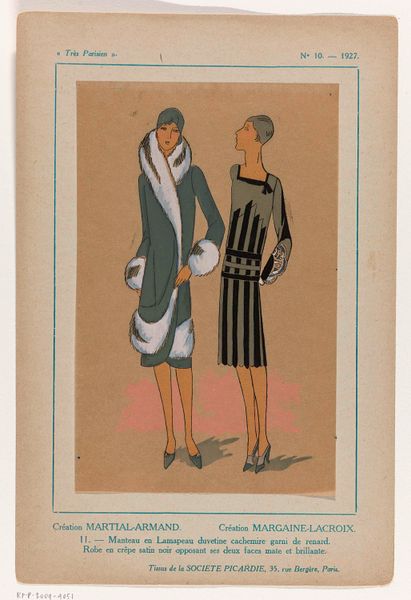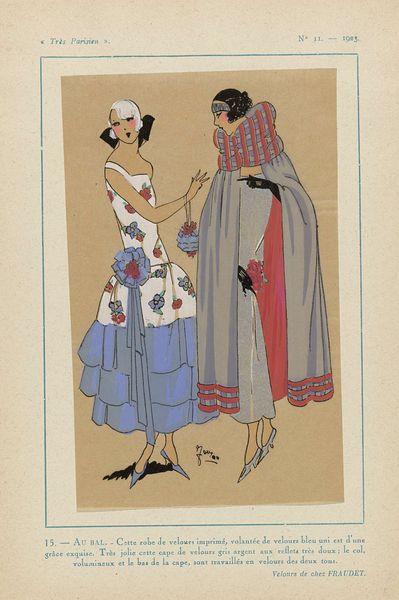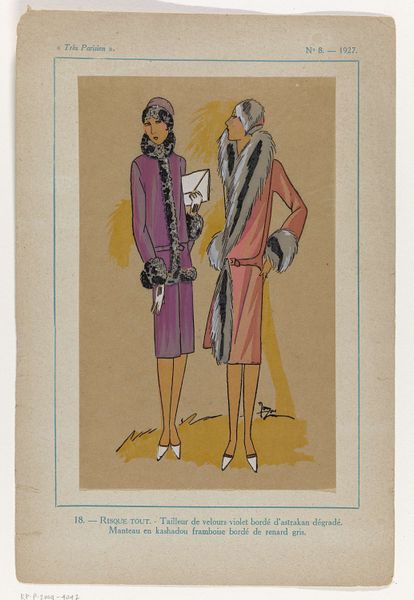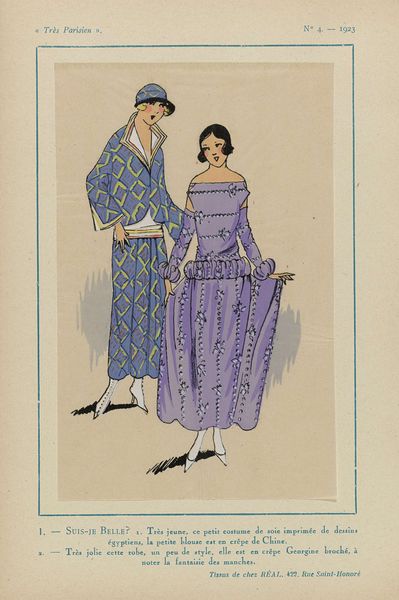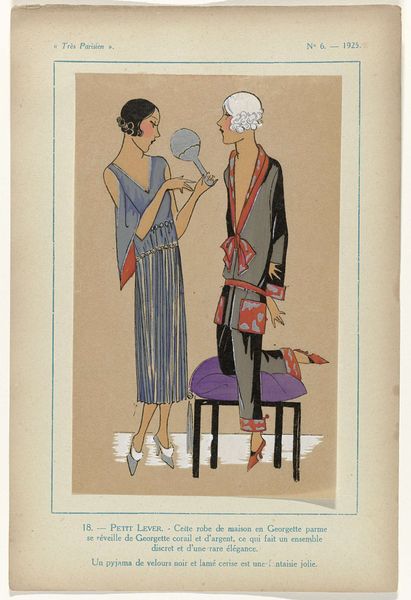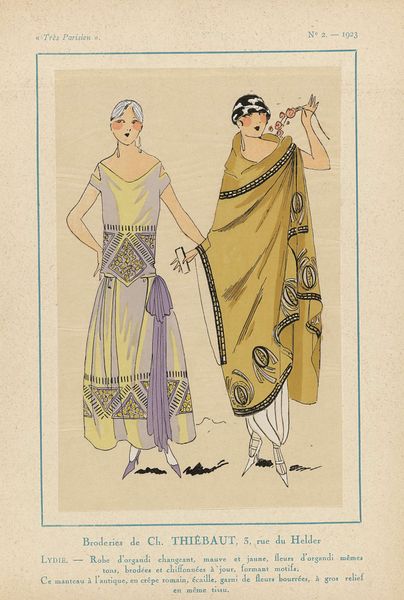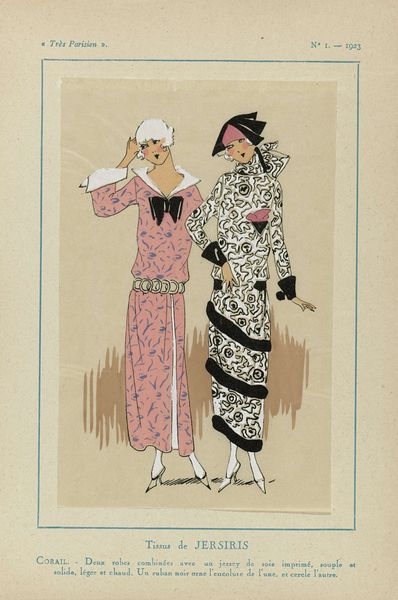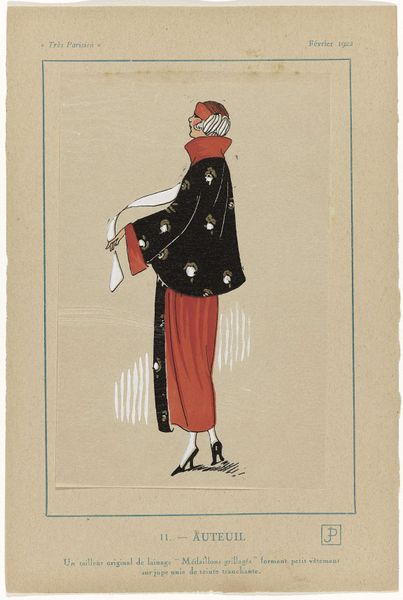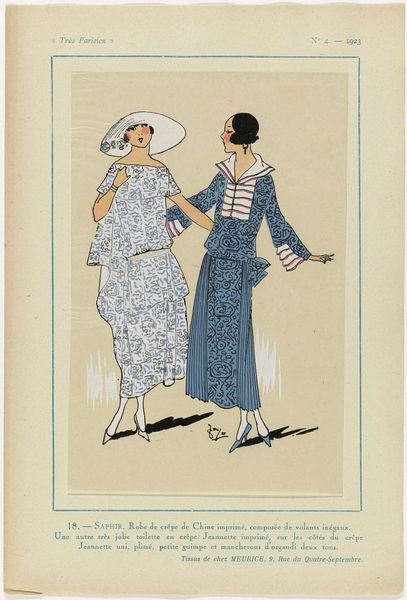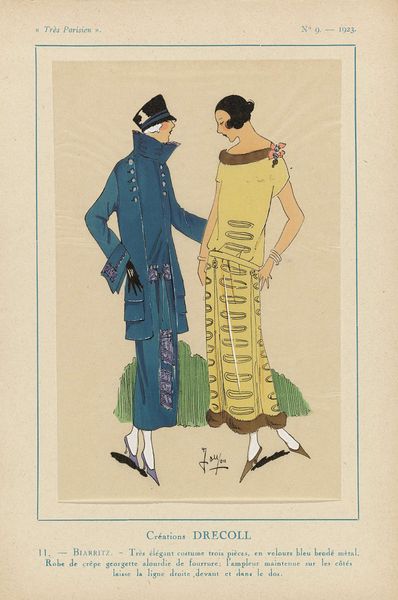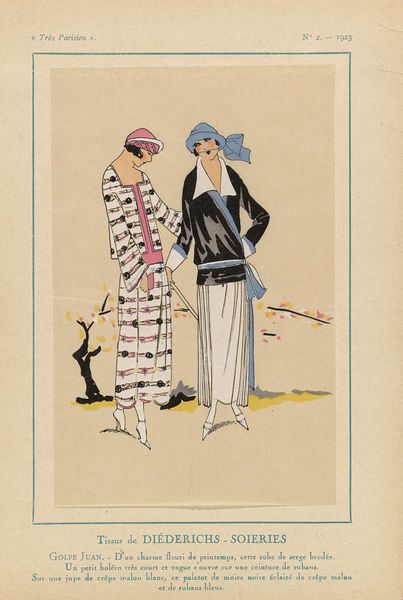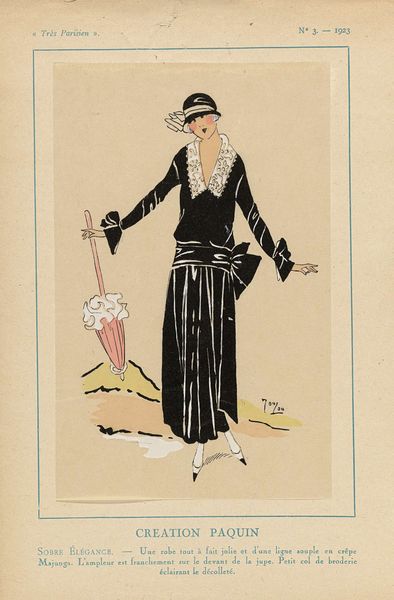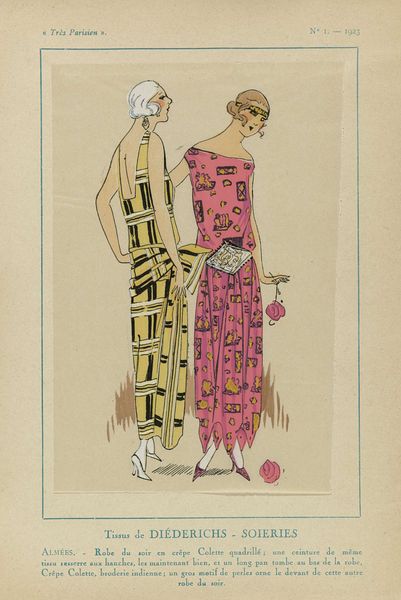
Dimensions: height 269 mm, width 180 mm
Copyright: Rijks Museum: Open Domain
Editor: This lovely ink drawing from 1923, "Trés Parisien, No. 2" is an advertisement for a dressmaker, Jerisiris. It's such a stylish, and really kind of fun, little piece. What strikes you most about its historical context? Curator: I’m fascinated by the ways such images function as both art and commerce. Look at the setting, a Parisian atelier—a space where fashion, artistry, and bourgeois aspirations intersect. The women, archetypes of the flapper era, become vehicles for conveying ideas about modernity, femininity, and social mobility. Who had access to the objects shown? And how were the desires of its target audiences being constructed by magazines like this one? Editor: That’s interesting – so, it’s more than just an ad, it’s kind of… shaping the culture? Curator: Precisely. These seemingly frivolous depictions helped construct and solidify new class aspirations. Think about the materials - jersey de soie - previously associated with more casual wear becoming fashionable, symbolizing the loosening of social codes. Consider, also, how the art deco style flattens depth and form. Editor: It almost feels… democratizing. At least visually. Curator: Perhaps visually, yes. But whose reality does that image serve and what ideals does it normalize? Consider, even, what isn’t represented. Editor: Wow, I’m definitely going to look at fashion illustrations differently now. Curator: I’m so glad! Analyzing even these seemingly simple images reveals the intricate relationship between art, society, and the forces that shape our perceptions.
Comments
No comments
Be the first to comment and join the conversation on the ultimate creative platform.
